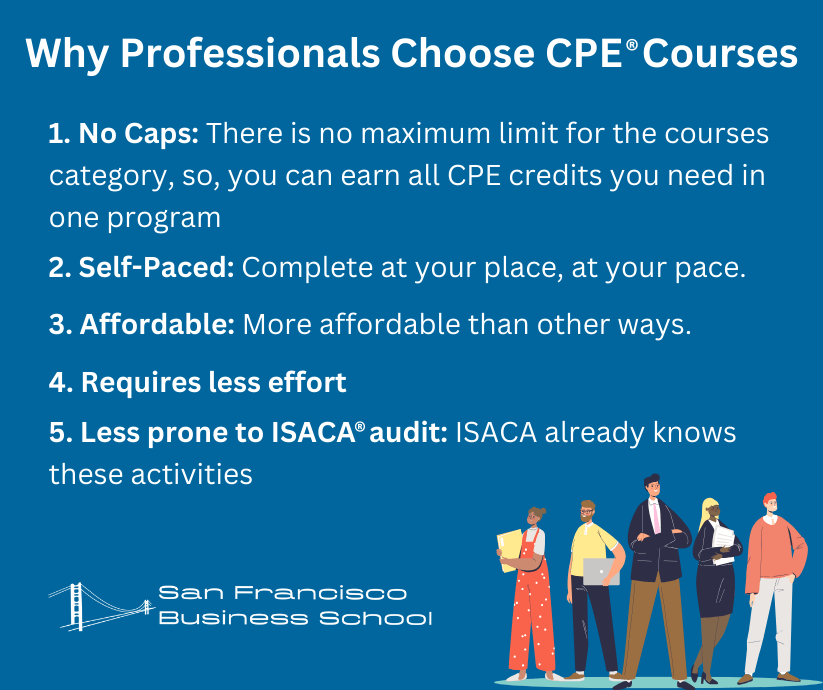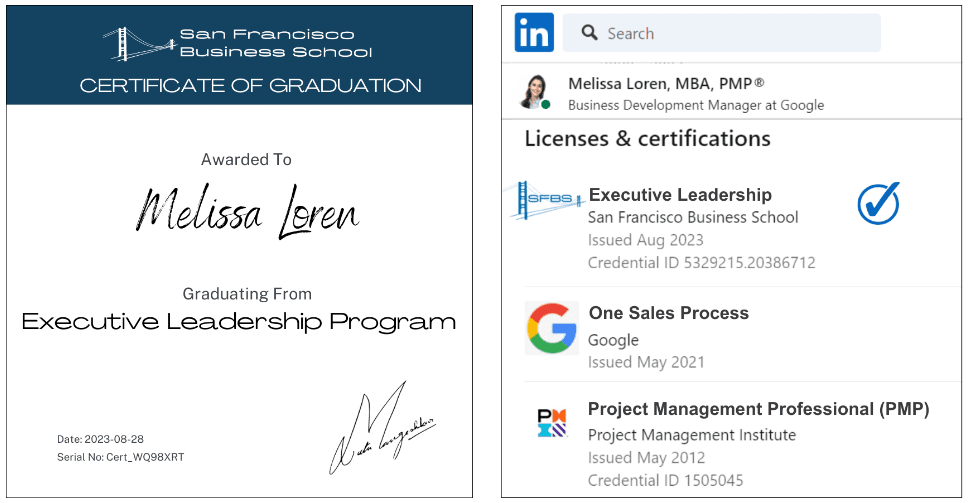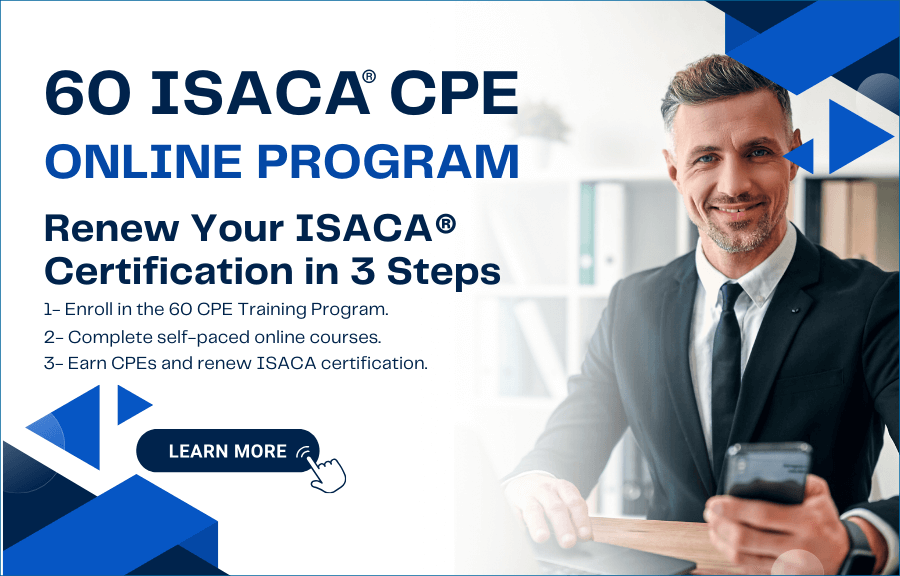10 Ways to Earn CISM CPE Credits – Free CISM CPEs Included
ISACA requires CISM certification holders to earn 120 CISM CPE credits every three years to renew their certification. There are certain CISM CPE requirements. We’ve explored the ways to earn ISACA CPE credits in this post.
In this article
📌 Hint: Do not skip this article, you will find FREE CISM CPE resources throughout the article.
CISM CPE Requirements
Before diving into the ways of earning CISM CPE credits, you need to know how many CPEs you need to renew your CISM certification and which activities count as CPE credits. CPE stands for continuing professional education and typically, one hour spent on an activity earns one CPE credit.
| Certification | CPEs Required Annually | CPEs Required Over a 3-Year Period | Annual Maintenance Fee |
| CISM | 20 | 120 | 45 USD for Members 85 USD for Non-Members |
ISACA requires CISM certification holders to earn 120 CPEs every three years. You must earn at least 20 CISM CPE credits every year and pay the annual maintenance fee as well. If you have a CISA certification, you can read CISA renewal article.
The annual reporting period begins on 1 January of each year. The three-year certification period varies and is indicated on each annual invoice and on the letter confirming annual compliance. For newly certified CISMs, the annual and three-year certification period begins on 1 January of the year succeeding certification. Reporting CISM CPE hours attained during the year of certification is not required. However, hours attained between the date of certification and 31 December of that year can be used and reported as hours earned in the initial reporting period.
Watch 10 Ways to Earn CISM CPE Credits Video
We’ve listed the 10 ways to earn CPE credits in our following YouTube video. The video refers to CISA CPEs, however, the ways to earn CPEs for CISM certification are exactly the same.
There are 10 different ways to earn CISM CPE hours. Let’s go over each way to earn CPE credits.
1st & Best Way to Earn CISM CPE Credits – Online Courses
While there are 10 different ways to earn CISM CPE credits, the most popular way to earn CPEs for professionals is through online courses. Here are the top 5 reasons why professionals choose CPE courses to renew their CISM certification.

- No Caps: There is no maximum limit for the Education category, so, you can earn all ISACA CPE needs in one program, and renew your certification. You do not need to go elsewhere to find additional CISM CPE credits to renew ISACA certification.
- Self-Paced: You do not need to attend an event, conference, or seminar. You can follow the courses at your place, at your pace.
- Affordable: Depending on the program content, you can enroll in a self-paced CISM CPE Online Course for ~$200-300. However, seminars or conferences start from $1,000, not only that, you may not earn all CPE needs in one event.
- Requires less effort: When you enroll in CISM CPE Courses, all you have to do is follow the curriculum, earn CPEs, and renew your ISACA certification. However, other CPE credits earning ways require significant effort from the ISACA certification holder such as creating content, sharing a presentation, authoring, etc.
- Less prone to ISACA® audit: Since the ISACA CPE training programs are used by many certified professionals, ISACA already has a track and record of the activities. However, for other categories, CPE submissions are more unique and may be more likely to hit an audit.
60 CISM CPE Credits Program
San Francisco Business School offers a CISM CPE Course program.
The program offers three self-paced business training programs: Executive Leadership, Strategy Creation & Execution, and Marketing Strategy. For each course in the program, SFBS awards a certificate of graduation. While earning CPEs, you will earn reputable business merits to highlight in your resume and LinkedIn.

3 Types of Educational CPEs
ISACA classifies educational CPEs into three different categories.
- Self-study courses (no limit): These activities include structured courses designed for self-study that offer CPE hours. These courses will only be accepted if the course provider issues a certificate of completion and the certificate contains the number of CPE hours earned for the course. SFBS 60 ISACA CPE course program goes into this category.
- ISACA professional education activities and meetings (no limit): These activities include ISACA conferences, seminars, workshops, chapter program meetings, and related activities. CISMs earn CPE hours according to the number of hours of active participation.
- Non-ISACA professional education activities and meetings (no limit): These activities include in-house corporate training, university courses, conferences, seminars, workshops, professional meetings and related activities not sponsored by ISACA. In addition, successfully completed university courses in related fields, including university online courses, earn 15 CPE hours per semester credit hour and 10 CPE hours per quarter credit hour (semester = 15 weeks of class; quarter = 10 weeks of class).
Watch How Suleiman Renewed His CISA Certification
Suleiman Adams is a CISA-certified Professional. Suleiman enrolled in the CISA CPE Course from SFBS and renewed his CISA. The CISM renewal process is the same as CISA renewal. Watch now his CISA renewal journey.
2nd Way to Earn CISM CPE Credits – Events
Attending events has benefits like expanding your professional network and learning the changing trends in your domain. However, there are some pitfalls to these events.
- Typically organized in big cities. If you are living in a relatively smaller city, you might not see any events to earn CISM CPE credits.
- Requires in-person attendance. Many of the events take a few days, and you have to take days off from your work to attend these events.
- Expensive. Typically, these events are charged $1,000/day. So, for a two-day event, you need to pay around $2,000. Travel and accommodation, if needed, are not included in these fees.
- Does not earn CPE credits at once. Although it requires a significant amount of time and money, you cannot earn all the required CPE credits you need through one event.
Considering you are a full-time working professional and looking to earn ISACA CPE credits in one step, we do not recommend this way for earning CISM CPEs.
San Francisco Business School offers a self-paced Free CISM CPE Course Online Program as well. If you attend this program, you can earn 3 Free ISACA CPE credits and submit them in the education category.
3rd Way to Earn CISM CPE Credits – Presentation
Vendor sales and marketing presentations can count for CPE credits as well. These activities include vendor product or system-specific sales presentations related to the assessment of information systems. There is a maximum CPE earning limit of 10 CPEs for this way.
4th Way to Earn CPEs – Teaching
These activities include the development and delivery of professional educational presentations and the development of self-study or distance education courses related to the assessment of information systems. For presentations and courses (all types), CISM CPE hours are earned at five times the presentation time or time estimated to take the course for the first delivery.
For instance, a two-hour presentation earns ten CISM CPE hours and the actual presentation time for the second delivery.
5th Way to Earn CISM CPE Credits – Authoring
Publication of articles, monographs, and books count for CPE credits. These activities include the publication or review of material directly related to the information systems audit and control profession. Submissions must appear in a formal publication, website, or business blog and a copy of the article or the website address must be available if requested. For books and monographs, the table of contents and title page must be available. CISM CPE hours are earned for the actual number of hours taken to complete or review the material.
6th Way to Earn CPEs – Exam Development
Exam question development and review for ISACA counts as CPE as well. This activity pertains to the development or review of items for the CISM exam or review materials. Two CISM CPE hours are earned for each question accepted by an ISACA CISM item review committee.
7th Way to Earn ISACA CPE Credits – Passing a Related Certification
Passing related professional examinations counts for CPEs. This activity pertains to the pursuit of other related professional examinations. Two CPE hours are earned for each examination hour when a passing score is achieved.
8th Way to Earn CISM CPEs – Working on ISACA Boards/Committees
Working on ISACA Boards or Committees counts for CPE hours as well. There is a maximum 20-hour annual limitation per ISACA certification for this way. These activities include active participation on an ISACA Board, committee, sub-committee, task force, or active participation as an officer of an ISACA chapter. One CPE hour is earned for each hour of active participation. Active participation includes, but is not limited to, the development, implementation, and/or maintenance of a chapter website.
9th Way to Earn CPEs – Contribution to the Profession
Contributions to the IS audit and control profession are another way to earn CISM CPE credits. There is a 20-hour annual limitation in total for all related activities for this type of activity. These activities include work performed for ISACA and other bodies that contribute to the IS audit and control profession (i.e. research development, certification review manual development, Knowledge Centre Contributor, performing peer reviews). CPE hours are earned for the actual number of hours contributed.
10th Way to Earn CISM CPE Credits – Mentoring
You can earn CISM CPE hours through mentoring. There is a limitation of 10 maximum CPE limits per year. Activities include mentoring efforts directly related to coaching, reviewing, or assisting with CISM exam preparation or providing career guidance through the credentialing process either at the organizational, chapter, or individual level. The mentoring activity must be an activity supporting a specific person in preparation for their ISACA exam or certification career decisions. One CPE hour is earned for each hour of assistance.
How to Calculate CISM CPE Hours
One actual hour of activity counts for one CPE credit. When calculating CPE hours, you must count the actual hours spent on the activity. Let’s go through an example.
Dave is a CISM-certified Information Security Analyst and attends a conference, IS360. IS360 is a one-day conference with several talks and discussions ongoing in different rooms. The schedule of the conference is as follows:
| IS360 Conference Schedule | Actual Hours | Minutes | |
| 09:00-10:15 | Master Talk | 1.25 | 75 |
| 10:15-10:30 | Coffee Break | 0 | 15 |
| 10:30-11:45 | Talks in Various Rooms | 1.25 | 75 |
| 11:45-13:30 | Lunch Break | 0 | 105 |
| 13:30-14:45 | Talks in Various Rooms | 1.25 | 75 |
| 14:45-15:00 | Coffee Break | 0 | 15 |
| 15:00-16:30 | Talks in Various Rooms | 1.5 | 90 |
| TOTAL | 5.25 | 315 |
Although the event is scheduled from 09:00 until 16:30, breaks do not count as CPEs. The actual hours spent for the activity is 5.25, and Dave can submit 5.25 CISM CPE hours toward renewing his CISM certification.
Summary
CISM-certified professionals need to earn 120 CPEs every three years. At least 20 CISM CPE hours must be submitted annually. Professionals earning the required CPEs and paying the ISACA annual management fees can renew their CISM certification.
There are 10 different ways to earn CISM CPE hours. The most popular way chosen by professionals is earning CPEs through CPE online courses. Professionals opt for online CPE courses because there is no limit to earning CPEs, affordable and easy to earn CPEs. Besides, CPE courses are less prone to audits as those activities are already known by ISACA.
When submitting CPEs, be careful to submit the “actual hours” you spent on the activity. For instance, breaks do not count in a full-day activity.

